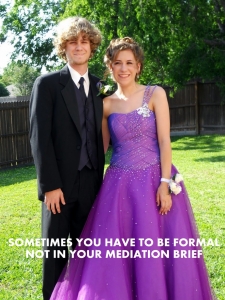Some issues aren’t worth fighting over. Yet, parties and counsel frequently do take a stand when they might do better by taking a step back and just throwing that issue away.

It’s the Principle of the Thing
OK, you’re completely right on this issue—but what is the big picture? A fight over a $300 interpreter bill is counterproductive when you are trying to resolve a claim with a value of $600,000.
When mediation participants staunchly maintain, “It’s the principle,” they almost always mean, “It’s the money.” Particularly for the employer side, this is a business negotiation. Savvy negotiators know how to bargain away the little issues to get the optimum result.
Location, Location, Location
Perhaps the most common throwaway is where to convene the mediation. Southern California is a big place, and drives of several hours to get to a Board or mediation are not uncommon. Sometimes parties argue over where to hold the mediation. You can’t resolve the case if you can’t even agree where to get together to talk about it.
Usually, California workers compensation mediations are held in one of the attorney’s offices. Sometimes only the defense attorney’s office is large enough to accommodate the participants. But negotiations may be most fruitful at a location which does not intimidate the injured worker. Using the AA’s personal office and the reception area for caucuses (mediator sessions with only one side) may seem cramped, but if the injured worker is most comfortable there, that may be the best choice. If you are arguing over this issue, just give it up.
I Owe You One, Man
Negotiation is a give-and take process. Once someone has acquiesced on an issue, the other party usually feels somewhat beholden to give way on the next one. Minimally, your “generosity” with issues which are of little consequence to you can show how reasonable you are. These concessions help advance the mediation toward a successful conclusion.
Some negotiators invent issues to fight over just so they can have them in their back pocket to throw away. Throwing away your position on an issue can be the smartest way to negotiate to the best final resolution.















